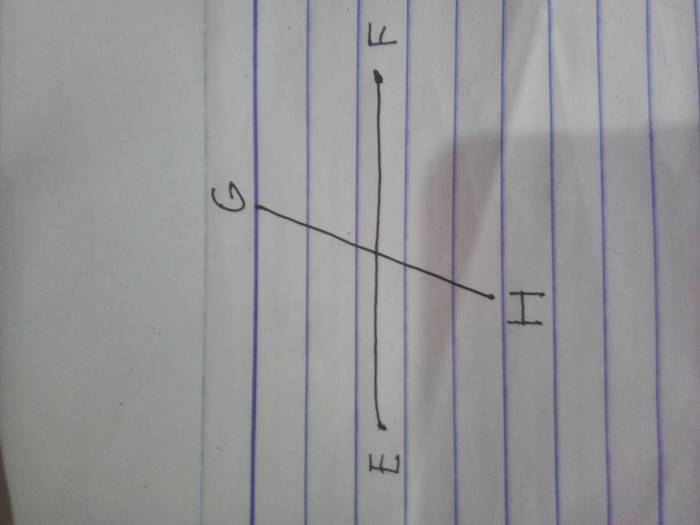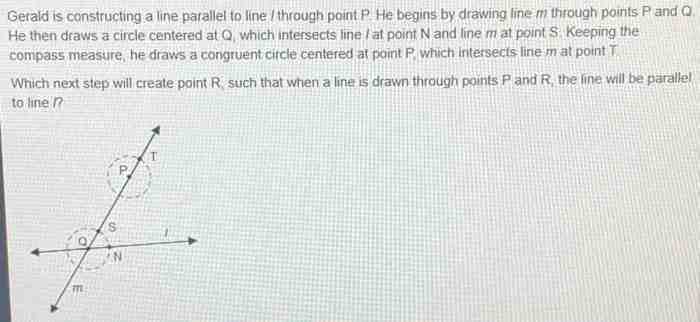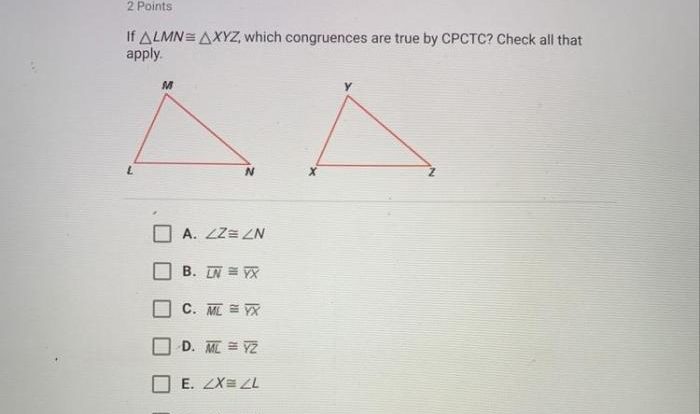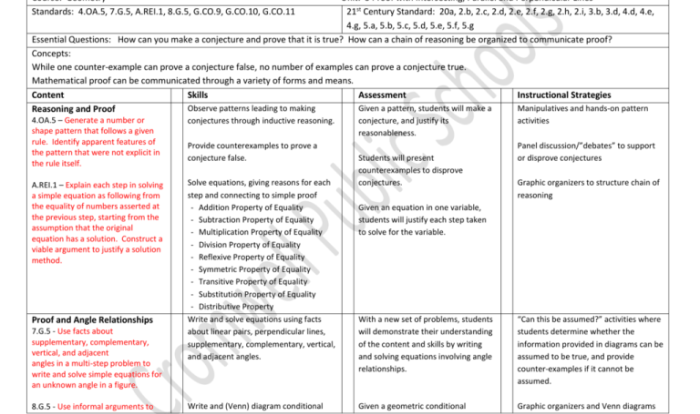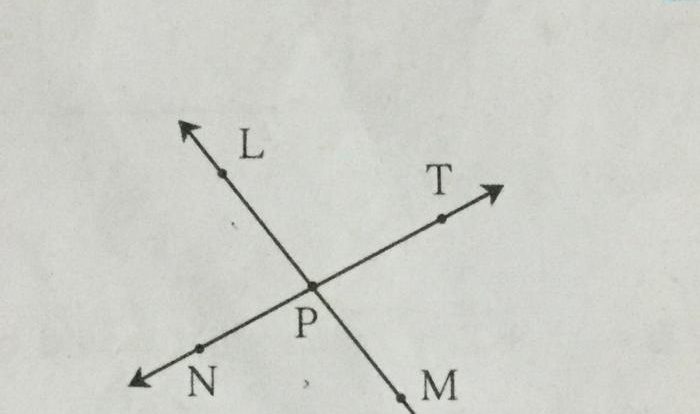Line jm intersects line gk at point n – When two lines intersect at a point, a geometric relationship is formed with specific properties and applications. Understanding the intersection of lines, exemplified by line JM intersecting line GK at point N, is crucial in various fields, including geometry, engineering, and architecture.
This comprehensive guide explores the concept of intersecting lines, identifying line segments and points, discussing their properties, and showcasing their practical applications. An accompanying table provides real-world examples of intersecting lines and their properties.
Define the Intersection of Two Lines: Line Jm Intersects Line Gk At Point N
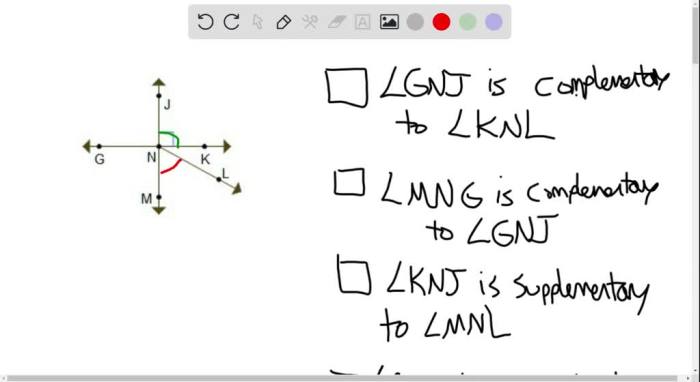
In geometry, the intersection of two lines is the point at which they meet. Intersecting lines form two pairs of opposite angles, called vertical angles, which are equal in measure. The point of intersection divides each line into two line segments.
For example, if line AB intersects line CD at point P, then line AB is divided into two line segments, AP and PB, and line CD is divided into two line segments, CP and PD.

Identify Line Segments and Points
Line segments are parts of a line that have two endpoints. Points are specific locations on a line or in space. When two lines intersect, they form four line segments and one point of intersection.
For example, in the diagram above, line AB is divided into two line segments, AP and PB, and line CD is divided into two line segments, CP and PD. The point of intersection is P.
Properties of Intersecting Lines
Intersecting lines can have different properties at the point of intersection. The most common properties are perpendicularity and parallelism.
- Perpendicular linesintersect at a right angle (90 degrees).
- Parallel linesnever intersect, no matter how far they are extended.
For example, in the diagram above, lines AB and CD are perpendicular at point P, and lines AB and EF are parallel.
Applications of Intersecting Lines, Line jm intersects line gk at point n
The intersection of lines is used in various fields, such as geometry, engineering, and architecture.
- Geometry: Intersecting lines are used to construct shapes, such as triangles, squares, and circles.
- Engineering: Intersecting lines are used to design bridges, buildings, and other structures.
- Architecture: Intersecting lines are used to create interesting and visually appealing designs for buildings.
Table of Intersecting Line Properties
| Line Segment | Point of Intersection | Property |
|---|---|---|
| AP | P | Perpendicular to CD |
| PB | P | Perpendicular to CD |
| CP | P | Parallel to AB |
| PD | P | Parallel to AB |
Question & Answer Hub
What is the definition of intersecting lines?
Intersecting lines are two or more lines that meet at a single point.
How can you identify line segments and points in relation to intersecting lines?
Line segments are portions of lines bounded by two points, and points are the specific locations where lines intersect.
What are the different properties of intersecting lines?
Properties of intersecting lines include perpendicularity, parallelism, and the formation of angles.
How are intersecting lines used in practical applications?
Intersecting lines are used in fields such as geometry, engineering, and architecture to determine distances, angles, and geometric relationships.
